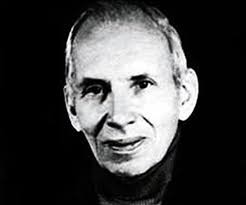
CWP Blog | CWP
George Koval, Russian Spy
September 24, 2019
September 24, 2019
CWP
CWP Blog
When George Koval died on January 31, 2006 not many people took note. Koval, a Sioux City, Iowa native, had been largely forgotten by the people he worked with at Oak Ridge and the Dayton Project during the Manhattan Project.
On November 3, 2007 this changed when Russian President Vladimir Putin conferred the posthumous title of “Hero of the Russian Federation” upon Koval, saying his work “helped speed up considerably the time it took for the Soviet Union to develop an atomic bomb of its own.”
Wait. What? Who was George Koval and what did he do?
It turns out that Koval was one of the top two Russian spies who stole secrets for the Soviet Union. His work enabled the Soviets to set off their first atomic bomb years ahead of predictions.
Koval was a clever young man. He graduated from high school at Central High School in Sioux City at age 15. After graduation he moved with his family to Russia in 1932 where he earned a chemistry degree in Moscow and apparently was drafted into the Soviet Military Intelligence (GRU) to work as a spy under the code name Delmar. After returning to the U.S. he was drafted into the US Army in 1943 where he was placed in a special Army training program, the Army Specialized Training Program (ASTP). This program was created to provide talented enlistees with an education and technical training rather than sending them to the front. The ASTP was disbanded in 1944 and its members were reassigned to the infantry. Koval was one of the dozen exceptions and he was assigned to the Manhattan Project at Oak Ridge instead through the Special Engineer Detachment (SED).
Koval worked at Oak Ridge until June 1945 when he transferred to the Dayton Project where he worked for 6 months. At Dayton he worked as a health physicist and had a top secret clearance.
According to the Russian government, Koval relayed back to the Soviet Union information about the atomic weapons production processes and descriptions of the weapon production sites.
After the war Koval attended City College of New York where he received a Bachelor’s degree in electrical engineering. By 1948 he decided that he would be safer leaving the U.S. and returned to Russia where he lived out his life in relative obscurity as a teacher at the Medeleev Institute in Moscow.

